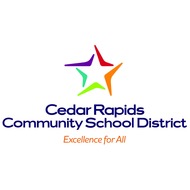
(View Complete Item Description)
This eight-week module focuses on a “science and society” topic, engaging students in reading compelling informational text about water sustainability, fresh water management, and how to make evidence-based decisions. In Unit 1, students read the article “Water Is Life” by Barbara Kingsolver as well as excerpts from The Big Thirst by Charles Fishman to build background knowledge about water sustainability and water management. Students determine main ideas and evidence in diverse media and clarify the issue of why humans need to manage water better. They also trace arguments and evaluate the soundness of reasoning and the sufficiency and relevancy of evidence in the texts and media that they engage with in this unit. In Unit 2, students participate in a robust research project in which they investigate the strategies of better agricultural and industrial water management. This research begins with students reading more excerpts from The Big Thirst to scaffold their research skills. Then students conduct internet-based research. To organize their research sources and information, students use a researcher’s notebook. Once they have finished gathering information, students analyze the impact of water management strategies.
Find the rest of the EngageNY ELA resources at https://archive.org/details/engageny-ela-archive .
Material Type:
Module




















